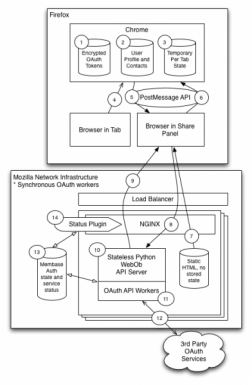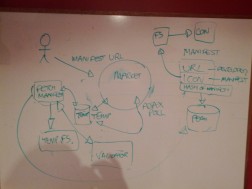“A goal without a plan is just a wish”
Thanks for taking a look at our second update to the fundraiser! If you can, please visit the GoFundMe page to share it on social media, or make a donation if you can! A special shout out to the folks who have donated since the fundraiser started: Allison Waithe, Joshua Bixby, and the other 3 anonymous donors! Thank you for your generous donations!
Last week I reached out to a few folks to find out if there was interest in distributing respiration masks to folks in Vancouver, and there was, so this week I sourced some low-cost respirator masks, decided on a funding platform, and launched a GoFundMe campaign to raise money. I have posted on the social media platforms I used, bugged coworkers, friends, and colleagues, and we are now over 50% of the way to our initial $1,000 goal!
Along the way I have spoken to a few other organizations that will help out with distributing the masks we get, but I have also learned a fair bit more about the effectiveness and limitations of the types of disposable masks we aim to hand out. One of the folks I have been discussing this plan with also shared Preparing for Extreme Heat and Poor Air Quality Events, an information seminar on how BC and Vancouver are preparing for this years, and future extreme weather events. The video is below, but the link to the BCNPHA above has more details about who and what the session entails.
The whole video is exceptionally informative, and worth watching, especially if you work with people who are at risk, and to know what resources are available in your neighbourhood. The information in this session was so valuable that it has resulted in a material change to how we will distribute the masks, and there will be more information on that later in this post! In the Question and Answer session at the end, the question came up around the effectiveness of respirator masks, and Dr. Sarah Henderson from the BC Centre for Disease control provided some great guidance on the effectiveness of masks. Overall, the simple question about masks made me question the value and efficacy of donating these masks, and so I reached out to Dr. Henderson for some more information, and she took the time to have a very informative discussion with me. Based on that discussion, I have a few key take-aways to make sure the distribution of these masks is a net positive for protecting at-risk and homeless folks.
- N95 Masks may provide a false sense of security
- N95 Respirator Masks are not a first line of defense
- N95 masks provide protection when properly used
- The best protection is to remain indoors
False Sense of Security
A key point that Dr. Henderson raises is that using a mask may present a false sense of security and encourage folks who are wearing one to do things they might not otherwise do – the example she uses is wearing a mask and going for a jog, when the same person might choose to jog indoors on a treadmill instead. Dr. Henderson also discussed in brief the protection that an N95 mask provides – protection against particulate matter, but not gases and volatile organics. This one hits close to home as folks with asthma are often more susceptible to the effects of those gases.
Over and above the risks that masks can’t protect against, the masks themselves may introduce a risk – worn properly they make breathing more difficult and could prove more of a hindrance to people with respiratory problems than the actual smoke the mask would protect against.
Not a First Line of Defense
Dr. Henderson (and really, all of the awesome folks involved in the seminar) drive home that the first line of defense are making sure that people have access to cool environments, clean air, and water as a way to cope with extreme weather events. At no point in all of the efforts that the City of Vancouver, BC Housing, and the BC CDC discussed in the session were masks raised – it was brought up in question at the end of the session from one of the delegates! Overall, this portion of the Q&A period made me question the value and efficacy of donating these masks. Based on discussions with other folks in community outreach, the focus on distributing these masks is to folks who are at-risk, and those poepolmay not have access to shelter or indoor locations with clean air. In order to make sure these donations are effective, I am revising the goal to providing the masks with the information at-risks folks need to able to get to and use first-line defenses discussed in the session above.
Properly using an N95 Mask for protection
Both Dr. Henderson and Dr. Schwandt talk about the effectiveness of using masks, and there are a couple of items that came up. First – for masks to be effective, they have to be N95 masks, regular dust masks, surgical masks, and clothing carry all of the negatives of wearing a mask without any of the benefits. Second, once you have an N95 mask, the key variable is fit. The masks are only effective if they are worn properly, and for that to happen they have to fit correctly, and this varies with face shape, size, and features such as facial hair, etc. In order to make sure distribution of masks, we are going to get at least three different types of masks. In addition, we have reached out to the folks who are going to help distribute the masks to figure out how to deliver training on helping the recipients to effectively wear the masks for good fit.
Remaining Indoors with clean air is the best defense
A repeated refrain for all extreme weather conditions is that staying indoors is the best way to protect yourself from wildfire smoke, and this year the City of Vancouver is expanding on the availability of Cooling centres and water fountains by also providing Clean Air centres that will feature locations that have air filters deployed to make sure folks who need to have a place with clean air they can go to. In order to make sure that mask recipients are aware of this, each mask will include an card with more information. So far the goal is to include:
- a map feature Cooling & Clean Air centres, and water fountains
- information about self-care during extreme weather
- details about the benefits and risks of using the masks
- instructions on how to wear the masks properly and care for them
Updated plan and pricing:
Practically speaking? Not much! I set out with the initial goal of raising $1,000 to provide masks for homeless people, with the goal of providing 1000 masks. The good news is that based on the estimated cost of getting the cards printed is approximately $150 from the first two estimates I got. Ideally, I should be able to find better pricing on the printing. The good news is that I have been able to find reasonable pricing for masks, and even though we are ordering 3 different types of masks, we should be able to find volume savings that that allow us to bring the cost for the masks low enough to cover the cost of printing the cards. At the absolute worst case scenario, we will provide approximately 850 kits rather than the goal of 1000, but
The goal is to have the design work for the information cards done this weekend, and to work with the community outreach groups distributing the kits (since it’s more than a mask now) to make sure that they have awareness of the issues with using the masks.
Our next update will probably be on Monday!




